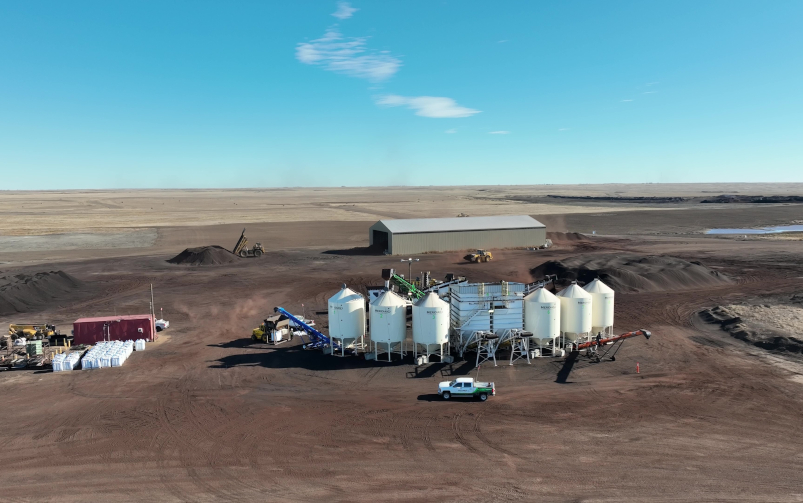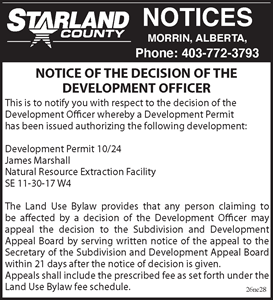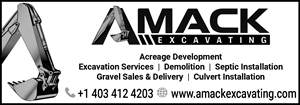
What was once considered a major setback for the Town of Hanna, has turned into a new and growing agricultural industry.
In 2015 the province began its ambitious phase-out of coal for electricity generation. A couple of years later ATCO indicated it would be phasing out coal generation “sooner rather than later” and the Sheerness power plant began transitioning to natural gas and the coal work was to be disbanded and reclaimed.
Agri-product manager for WestMET, Clay Williams explained the Westmoreland Mine would supply the Sheerness plant across the road.
“Once that was regulated out of competitiveness, the coal mine was pretty much done and it went into full reclamation mode,” he said. “February 2021 was our last coal shipped to the power plant.”
He said during this time they were selling humalite to various processors.
Humalite is a unique soil amendment that is formed during the decomposition of organic materials, a humic acid granule. It is a high-value organic matter that is used in soils to make them more fertile and productive.
In terms of organic and carbon matter, it is between coal and peat.
“We would sell it to get it out of the way, but once we did some research on it we started to learn this is the highest quality humic product in the entire world,” said Williams. “It has the highest humic content and low heavy metals. It’s a unicorn of a reserve and high amounts of it. At that point, we decided to experiment with different uses of this product.”
A new company sprung from Westmoreland Coal called WestMET that will develop the humalite products as well as create an advanced skills and technology platform focused on a large-scale reclamation.
They are producing an agricultural product that can be used for general agriculture as well as a turf-grade product, and a powered grade to turn into a liquid form.
“We went one step further and started putting it in one-ton totes and exporting it all over the world, and that is kind of where we are at now, said Williams. “We took this product that is kind of a specialty here and kind of turned it into something that kept the place alive.
The reclamation on the site continues, but so does this new initiative. While it may not employ as many employees as the mine did just a few years ago, it has kept an employer in the community.
“We hope to have all of that reclamation done by next year, that is a pretty tight timeline when you compare that to other mines that are taking 20-plus years, we are doing it in under five so it is a big effort,” he said. We are creating both sides of it. We are creating this green agricultural product that we want to be known for, whilst at the same time we want to be known for how good we are at reclamation.”
They are using humic products for their reclamation well, by combining it with organics to create new topsoil that can be used. They are also crafting products that help solve ag issues such as pH issues or low mineral content.
We pretty much turned this mine around from a dying coal mine to an opportunistic agricultural products line,” he said.
One challenge they are working on is creating a new market for their product.
“It is not used in North America that much… it is kind of a new thing for farmers here, whereas if you look at other places it is a very common agricultural input,” he said.
He explains that in other places such as Europe and Asia where farming has taken place for thousands of years, organic matter has been depleted, and they are using humic on their land.
“In North America, we have only been farming for hundreds of years so it hasn’t been a problem, but now farmers are looking more on the regenerative side of trying to increase organic matter and help the biology in their soils it has now become a focus, and this the primary product to help fix this.”
In terms of sustainability, he says this is the largest depot of this project at this high of quality in the world, and there is a lifetime of supply. In terms of extracting it , it is not as complex as coal.
“It is quite a bit easier. The coal is quite a bit deeper and we used a dragline and big coal haulers to move millions of tons of coal,” he said. “Humalite is quite a bit shallower and easy to access.”
“It is a different scale because we were talking about millions of tons of coal, now we are talking about thousands of tons of humalite, but as adoption increases throughout North America maybe we'll increase to those numbers again.”




























